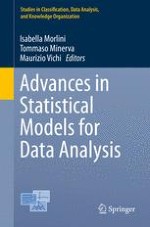This edited volume focuses on recent research results in classification, multivariate statistics and machine learning and highlights advances in statistical models for data analysis. The volume provides both methodological developments and contributions to a wide range of application areas such as economics, marketing, education, social sciences and environment. The papers in this volume were first presented at the 9th biannual meeting of the Classification and Data Analysis Group (CLADAG) of the Italian Statistical Society, held in September 2013 at the University of Modena and Reggio Emilia, Italy.
